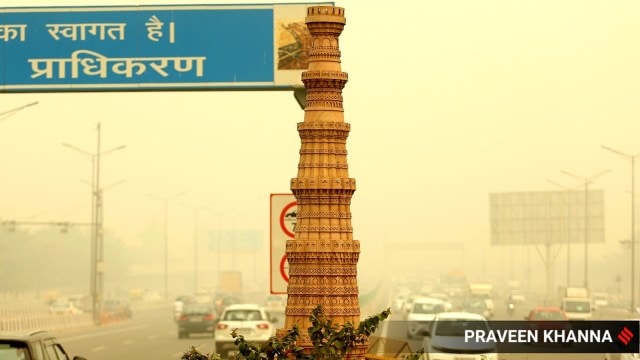What is Delhi’s odd-even scheme, to be introduced from November 13 in bid to curb air pollution?
The ‘odd-even’ was first introduced in Delhi by the AAP government to control vehicular pollution and bring down increasing particulate matter levels
 The national capital also experienced 32.5 mm of rainfall in February this year, the highest in the month since 2013.(Express Photo: Praveen Khanna)
The national capital also experienced 32.5 mm of rainfall in February this year, the highest in the month since 2013.(Express Photo: Praveen Khanna) As Delhi’s air quality continues to be in the “severe” category, the state government has decided to reintroduce the odd-even scheme from November 13-20.
“The scheme has been enforced in Delhi before. On odd dates, vehicles with registration numbers ending in 1, 3, 5, 7 and 9 will be allowed to ply. On even dates, vehicles with registration numbers ending in 0, 2, 4, 6, 8 will run,” Environment Minister Gopal Rai said on Monday. Based on pollution levels over the one week when the scheme will be implemented, further decisions will be taken, Rai added.
What is the odd-even scheme?
In the odd-even scheme, vehicles whose registration number ends on even digits are allowed to ply on even dates like 0, 2, 4, 6, 8, 10 and so on. Similarly, vehicles having their registration numbers ending on odd digits, are allowed to ply on odd dates such as 1, 3, 5, 7, 9 and so on.
Only odd-numbered cars were allowed on the roads between 8 am and 8 pm on odd days, whereas even-numbered cars were allowed in the same time on even days. The people who violated the rule were fined Rs 2,000. Special arrangements like extra buses, a bike taxi service and increase in the metro frequency were made to make the plan successful.
In the previous phases of the scheme, two-wheelers, women-only vehicles, CNG, hybrid and electric vehicles, emergency vehicles and VIPs were exempted from it. Apart from the VIPs, politicians, Supreme Court judges and defence vehicles, single women drivers and women drivers with children below the age of 12 were also exempted.
When was the odd-even scheme first implemented?
The ‘odd-even’ was first introduced in 2016 by the AAP government to control vehicular pollution and bring down increasing particulate matter levels. Under it, private vehicles with registration plates ending in odd numbers could ply on odd dates, and even numbers on even dates.
Has the odd-even scheme worked?
According to a study done by Delhi Technological University published in 2016, when the scheme was implemented for a roughly two-week period, concentration of PM 2.5 and PM 1 saw a drop. Studies have also shown that on an average, there was a reduction in PM 2.5 of 5.73 per cent and 4.70 per cent in PM 1 levels. The university conducted a study in three different corridors of the city — Pitampura (Madhubhan Chowk), Panchkuian Road and Najafgarh road.
The scheme had also landed Kejriwal among Fortune Magazine’s 50 greatest leaders in 2016 for his efforts to curb pollution in the national capital.
- 01
- 02
- 03
- 04
- 05































